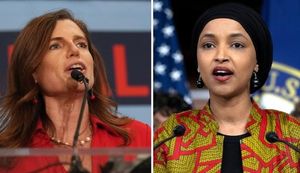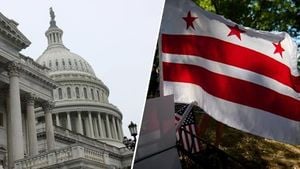The past week played out like a gripping financial thriller on Wall Street as the U.S. Federal Reserve made headlines with its bold decision to slash interest rates. This marks the first time the central bank has cut rates since 2020, and the reaction from the markets wasn’t just significant; it was staggering. Stocks surged to record highs as investors embraced the prospects of cheaper borrowing costs and their ensuing impact on consumer spending and investment.
The Fed announced it would reduce its benchmark interest rate by 0.5% (50 basis points), bringing it to a range of 4.75% to 5.00%. This decision was unexpected by many analysts who had predicted only minor changes. With inflation appearing to moderate and the economy displaying resilience, the decision was perceived as necessary to stimulate growth and support job gains.
Inflation has been slowly easing back, with the headline rate hitting 2.5% as recently as August 2024. While the Fed’s goal is to maintain low inflation without jeopardizing the job market, this rate cut sent ripples across various sectors, demonstrating how intertwined the financial markets have become with the Fed’s monetary policies.
The stock market's reactions were immediate and explosive: the S&P 500 reached record highs, reflecting investor optimism over the benefits of lower interest rates. This change added nearly 2% to the index, showcasing the market's confidence. Notably, gold prices also soared, reaching over $2,600 per ounce—another indication of how these monetary shifts influence investor behavior. The Straits Times Index (STI) even saw its highest levels since 2007, indicating broader regional confidence.
Investors are now turning their gaze toward real estate investment trusts (REITs), which are expected to benefit from this rate cut. With mortgage costs dropping, many are cautiously eyeing the property market and their investment strategies. Yet, not everyone shares the same sense of optimism. Some analysts, such as Gordon Johnson from GLJ Research, raise alarms about the potential return to stagflation—a combination of stagnation and inflation. Johnson warned, "Get ready for stagnation," alluding to historical lessons from past economic missteps.
Meanwhile, consumer activity, as gauged by retail sales, also showed unexpected strength, with figures rising by 0.1% month-over-month for August. This is pivotal since strong consumer demand can bolster economic recovery and justify the Fed’s decision to cut rates. Some economists believe the uptick may lessen the likelihood of more aggressive rate cuts moving forward, balancing the need for stimulus with caution over overheating the economy.
You'd think it stops there, but there's more drama. Betsey Stevenson, who served as an economic advisor during the Obama administration, expressed surprise at the “optimism” radiated by some political figures following the rate cut. She emphasized how the realities of the economy and consumer sentiment may not align with such political cheerleading. This disconnect brings us right to the heart of political discourse as 2024 elections loom closer.
Even Donald Trump, who has been vocal about the Fed’s policies, raised fingers at their intentions. He posits the cuts might be politically motivated, aiming to sway middle-class voters by offering temporary relief. But there’s also Kamala Harris, who welcomed the development, arguing it brings needed relief to families burdened by inflation.
Investors bruised and bewildered by the recent upheavals are left pondering their next moves: Are these rate cuts sustainable? What does this mean for economic growth moving forward? These questions linger as analysts play the guessing game on future rate cuts expected in 2024 and beyond.
Moving forward, the economic calendar holds key indicators such as personal consumption expenditure (PCE) data, which will be closely watched to gauge consumer inflation and spending habits. Experts believe this data may provide insights on whether the Fed will continue adjusting rates as it navigates the choppy waters of recovery and inflation.
Striking the right balance is no easy feat for the Federal Reserve as it aims to support economic growth without allowing inflation to spiral out of control. The road is rocky, and as key economic indicators begin to paint the broader picture, investors and policymakers alike are left to analyze how these changes influence the economy at large.
With the 2024 elections on the horizon, will these monetary tactics successfully sway the sentiments of the middle class, or will the underlying economic realities overshadow these efforts? Only time will reveal if the Fed’s recent actions can provide the relief hoped for or if they merely scratch the surface, leaving underlying issues unresolved.



